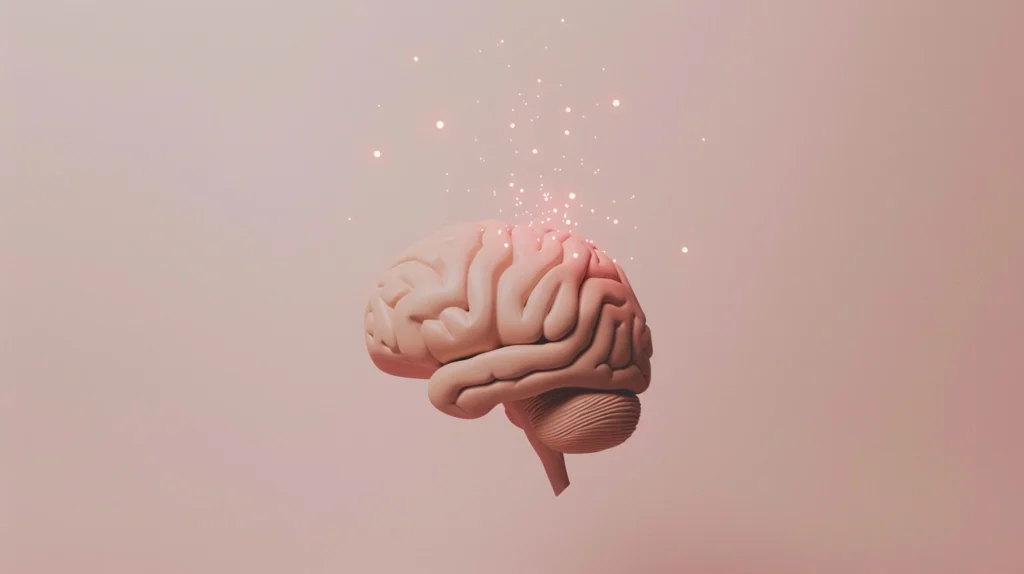
“If I use ketamine nasal spray, will I get high?” I think that this question reflects two intertwined fears. One is pharmacological: you want to know whether the spray will mimic recreational ketamine experiences you may have heard about. The other is personal: you wonder whether you will remain in control of your thoughts, your body, and your dignity. As a physician who has researched novel therapeutics for nearly a decade, I can tell you that decisive answers exist – and they are grounded in rigorous science, and the lived experiences of people just like you.
Today, I will walk you through how intranasal ketamine behaves in the body, why the therapeutic experience differs fundamentally from a recreational “high,” and how medical safeguards transform a dissociative molecule into a catalyst for healing.
Ketamine 101: A Molecule with Two Faces and Decades of Data
When ketamine first entered hospital operating rooms in the late 1960s, anesthesiologists valued its ability to spare breathing reflexes and stabilize cardiovascular function. What they could not fully predict was that low, sub-anesthetic doses would someday rewrite psychiatry textbooks. Chemistry gives us a key clue. Ketamine exists as two mirror-image molecules: R-ketamine (arketamine) and S-ketamine (esketamine). The S-enantiomer binds the brain’s NMDA receptors at least two times more avidly than its R counterpart. That heightened affinity partly explains why esketamine works at lower milligram doses yet produces robust antidepressant effects.
You will often hear clinicians distinguish between “racemic ketamine,” the fifty–fifty mixture available for intravenous infusions, and “esketamine,” the purified S-form packaged as the nasal spray Spravato®. Both versions block NMDA receptors, but the nasal-spray formulation layers in critical practical advantages: no intravenous line, timed absorption curves that peak in about half an hour, and a portable device that meters each puff so precisely that dosing errors are rare.
The body handles esketamine much the way it handles many modern psychiatric drugs – through the cytochrome P450 system in the liver. CYP2B6 and CYP3A4 do most of the metabolic heavy lifting, converting esketamine to noresketamine, a metabolite that still carries antidepressant activity but minimal psychoactive punch. The parent compound leaves the bloodstream with a terminal half-life of seven to twelve hours, long enough to allow a gradual taper from perceptual effects back to baseline awareness.
How the Ketamine Nasal Route Delivers Potency Without Overwhelm
Let’s translate the pharmacokinetics into lived experience. When you spray esketamine into your nostrils, it passes through delicate nasal mucosa straight into systemic circulation. The result is a bioavailability hovering around 48% – considerably higher than the 8% you would get by swallowing the same dose.
Peak plasma concentrations arrive roughly twenty to forty minutes later. Those minutes often feel like ascending a gentle escalator: you notice a slight warmth, perhaps a metallic taste, and then a subtle shift in sensory processing. Because the rise is not abrupt, anxiety rarely spikes, and conversations with your therapist can still flow. In my experience, most clients describe the transition as “soft edges on reality” rather than the rocket-launch sensation sometimes reported with intravenous boluses.
From the clinician’s side, the timeline allows us to check your blood pressure – and yes, it can bump up transiently by ten to twenty mmHg – adjust room lighting, and encourage slow breathing if emotions surface. Blood-pressure peaks usually occur forty minutes after dosing and drift back toward baseline within four hours. By the two-hour mark, your cognitive test performance would likely mirror pre-dose levels, a pattern validated in a volunteer study captured in the same data set.
The Ketamine “High” Explained: Dissociation, Euphoria, and Their Therapeutic Crossroads

You might still wonder whether that gentle ketamine escalator culminates in a euphoric vista. The short answer is no – at least not in the party-drug sense.
When street users pursue a “K-hole,” they often snort three or more times the typical antidepressant dose of ketamine, resulting in blood levels that impair motor control and trigger vivid hallucinations.
In a medical setting, clinicians will cap your ketamine dose long before that threshold. The goal is a controlled dissociative state: you feel a spaciousness between your observing self and habitual thought loops, but you remain oriented, able to speak, and free to choose whether to share insights aloud.
From a neurobiology standpoint, NMDA receptor blockade quiets the brain’s default-mode network – the circuitry responsible for self-referential rumination – while boosting glutamate release that, downstream, amplifies BDNF and synaptogenesis. I often liken the effect to “aerating compacted soil”. New neural seeds can take root where depression once cultivated only weeds. You may see faint geometric patterns behind closed eyelids, or experience time dilation where minutes stretch like taffy. Yet because the dose stays sub-anesthetic, your sense of safety remains intact.
In my opinion, mislabeling of therapeutic dissociation as a “high” obscures an essential truth: the subjective strangeness is not entertainment, but rather the scaffold on which new cognitive-emotional wiring is built. Clients routinely tell me they discover a bird’s-eye view of trauma narratives that once felt unbearably close. That orientation shift, not euphoria, drives the clinical gains.
Inside a KAP Session: Ketamine Spray to Integration
To make the abstract concrete, let me explain what your first intranasal ketamine session might look like.
After completing medical intake, you enter a softly lit room furnished more like a spa lounge than a clinic bay. Noise-canceling headphones rest on the arm of a recliner; a weighted blanket waits nearby. I sit with you to review intentions – perhaps releasing self-blame over postpartum depression, or easing combat-linked hypervigilance.
When you feel ready, you administer the first two esketamine sprays, one per nostril.
Over the next ten minutes your cheeks warm, sounds muffle slightly, and the boundary between your body and the chair softens. Because onset is gradual, you have space to communicate any discomfort.
Fifteen minutes in, we may deliver another pair of sprays if your blood pressure and subjective comfort allow.
By the twenty-five-minute mark, the dissociative plateau unfolds. Some clients close their eyes and follow curated music. Others keep eyes open and talk through emerging memories, guided by a therapist trained in trauma-sensitive dialogue.
Around forty-five minutes, lightness yields to grounded clarity. You may feel words bubbling up – fresh connections between past events and present triggers. We encourage journaling or voice notes while the insights are vivid.
At the sixty-minute mark, I assess vital signs again; most parameters hover near baseline. You sip water, perhaps eat a light snack. We keep you with us for about two hours to ensure your abilities have fully rebounded.
Before discharge, we schedule an integration session within twenty-four hours because the neuroplastic window stays propped open for at least a week. That follow-up is where insights crystallize into action plans: a boundary to set with a partner, a mindfulness practice to anchor mornings, or a referral to pelvic-floor physiotherapy if somatic tension surfaces.
Why Choosing Supervised Ketamine Nasal Spray Sessions Beats Going DIY

I am aware that some online forums discuss compounded ketamine sprays intended for home use without medical supervision. I must strongly advise against this practice. Using ketamine nasal sprays improperly poses significant risks, including psychiatric complications, misuse, and potential for abuse. The official Spravato® spray comes with a Risk Evaluation and Mitigation Strategy (REMS) that mandates administration in a certified clinic under observation for at least two hours.
In my experience, those regulations are not bureaucratic red tape but essential guardrails:
- By monitoring vital signs, we catch rare hypertensive surges early.
- By keeping you in a supportive environment, we prevent impulsive behaviors that can accompany transient dissociation.
- And by embedding psychotherapy during and after dosing, we transform a pharmacological effect into a therapeutic intervention rather than a fleeting novelty.
Field Trip Health amplifies those safeguards with a calming aesthetic – nature-inspired design, soft aromatherapy, tactile blankets – because environmental cues modulate psychedelic experiences. The moment you enter, your nervous system receives a message: “This is a safe place.” Trust me, that felt sense matters as much as milligram precision.
Ketamine Administration Routes Compared
I often explain to clients that intranasal ketamine delivery sits at a sweet spot between intravenous precision and oral convenience.
- IV infusions deliver 100% bioavailability but require needles and pumps
- sublingual lozenges offer simplicity but only reach about 25% systemic exposure
- nasal spray, hovering near 50%, achieves antidepressant plasma levels without invasive hardware, and the metered device – subjected to multiple human-use studies for optimal spray plume – maintains dosing fidelity.
Clinically, this translates to greater predictability, allowing us to focus less on hemodynamics and more on therapeutic dialogue.
Addressing Common Ketamine Fears One at a Time

Some of you worry that the dissociative state will unlock secrets you are not ready to share. In my experience, agency remains intact. You can choose silence or speech.
Others fear triggering substance-use cravings. The structured, low-frequency dosing schedule – usually once or twice a week during induction – differs so dramatically from recreational binge patterns that relapse risk stays low. Still, we run urine screens if a history of addiction raises clinical flags, ensuring transparency and mutual accountability.
Then there is the driving question. No, you cannot drive yourself home the day of a session. Cognitive performance normalizes within two hours, but legal and ethical prudence dictates arranging a ride or letting us book transportation. Planning ahead turns that logistical hurdle into a non-issue.
The Bottom Line: Does Ketamine Nasal Spray “Get You High”?
Therapeutic intranasal esketamine does not produce a reckless, euphoric “high.”
Ketamine nasal spray induces a deliberate, time-bounded dissociative state that quiets self-critical circuits and ignites synaptic growth. In a supervised environment, the experience feels more like stepping into a lucid dream where insights replace intoxication.
When that experience is paired with structured psychotherapy, many of you will feel mood relief within hours and life-course shifts within weeks.
The molecule is powerful, yes, but the container – medical oversight, therapeutic alliance, integration homework – transforms power into purpose.
Conclusion
I began my career in family medicine to serve entire life spans, from childhood ear infections to end-of-life care. Over the years, mental-health stagnation emerged as the most stubborn enemy of well-being I encountered. Founding Field Trip Health allowed me to merge clinical rigor with compassionate innovation. I know that trying something “new” after a string of disappointments can feel like emotional Russian roulette. Yet I have watched parents reclaim patience, veterans release hypervigilance, and young professionals rediscover ambition – all through a protocol that respects both neuroscience and narrative.
If you sense a flicker of curiosity, hold onto it. Reach out. Ask your hardest questions. Whether you find yourself in one of our in-person clinics or join our at-home program via encrypted video link, my team stands ready to guide you through every spray, every insight, every integration step. Your story is not finished, and neuroplasticity means the next chapter can differ dramatically from the last.
Stay well, stay curious, and remember: transformation can begin with a single, precisely measured breath through a ketamine nasal spray.
Frequently Asked Questions
Purity, dosing precision, and supervisory context. Street powders vary wildly in concentration and contamination, whereas Spravato® delivers a fixed spray each trigger pull, and a physician watches for adverse reactions in real time.
The effects of ketamine nasal spray typically last for about 2 hours during the session. However, the antidepressant benefits can persist for days or weeks after treatment. The most effective neuroplastic window remains open for about 24 hours, up to a week, allowing for continued integration and therapeutic work.
Yes, ketamine nasal spray can be used for various conditions beyond depression. It may be effective for anxiety disorders, trauma-related conditions like PTSD, and certain chronic pain conditions with neuropathic features. However, its use should always be under medical supervision and as part of a comprehensive treatment plan.
Long-term side effects of ketamine nasal spray are still being studied. Most side effects are short-term and resolve quickly. However, potential concerns include bladder issues with prolonged use and the risk of developing tolerance. Regular medical monitoring and following prescribed treatment protocols help minimize risks.
While ketamine has potential for misuse, the controlled administration of ketamine nasal spray in a medical setting significantly reduces addiction risk. The structured, low-frequency dosing schedule differs from recreational use patterns. However, patients with a history of substance abuse may require additional monitoring and care.
Ketamine nasal spray treatment can be more expensive than traditional antidepressants, especially if not covered by insurance. However, its rapid action and potential to reduce hospitalizations or other interventions may offset costs. Some clinics offer package deals or sliding scale fees to improve accessibility.
In most cases, ketamine nasal spray can be used alongside other medications, including antidepressants. However, certain drug interactions may occur, particularly with medications that affect blood pressure or brain function. A thorough medical review is necessary before starting treatment to ensure safety and efficacy.
Ketamine nasal spray and IV infusions both show effectiveness for treatment-resistant depression. Nasal spray offers convenience and doesn’t require IV access, while infusions provide more precise dosing control. Nasal spray has about 50% bioavailability compared to 100% for IV, but still achieves therapeutic effects with proper dosing.
About the Author

Dr. Mario Nucci MD CCFP is a licensed Family Physician with a passion for mental health and the development of new therapies. He is actively engaged in research with a faculty associate professorship at Northern Ontario School of Medicine, and research collaborations with the University of Ottawa, University of Calgary, Lakehead University, Concordia University and Vancouver Island University.
Dr. Nucci is the founder of Bay and Algoma Health Centre in 2019, a walk-in and addiction medicine clinic. He founded the Canadian Centre for Psychedelic Healing in 2019, now operating as Field Trip Health, providing cutting edge mental health care in Toronto, Montreal, Vancouver, Ottawa, Hamilton, Kitchener-